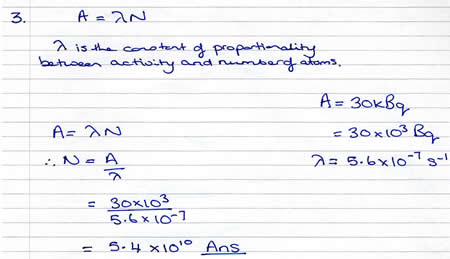Setting Out Calculations
When setting out
your calculation work it is important that you structure your answers.
Marks are given not only for the correct answer but also for a clear
communication of your thinking as you tackled the problem.
Here are some simple
steps to follow.
- Read
the question carefully and extract the information from
it by listing the data given to you on the right hand side of your
page. Make a neat column of the figures given
and the UNITS!!! (and change them into SI units if necessary
- for example, times given in minutes should be changed into seconds
there and then!)
- Think about what
is happening in the question and if appropriate
sketch a diagram to illustrate it - marking on forces,
distances etc.
- Quote
the general equation that you are going to use to solve
the problem - saying what the letters/symbols stand for.
- Substitute
the symbols/letters with the data you have at the top of
the page to leave you with the unknown.
- Call
this unknown 'x'
or something
- don't put '?' for it!
- Manipulate
the equation and calculate the unknown - put each line
of mathematical reasoning on a separate line - use WORDS to explain
what you are doing - do NOT simply put a string of = signs between
sets of numbers that are not equal
For example
- some students when changing 5 minutes into seconds write
5 = 5 x 60 = 300
5
= 300 ????? No way! Illogical maths!
it
should be written:
5
mins = 5 x 60 seconds = 300s
- Consider the
number of significant figures
that the quastion has been written in and then quote the numerical
answer to that number.
- Consider the
unit of your answer carefully and add it to the numerical
answer.
It is a good idea
to make your final answer stand out clearly by putting it on a separate
line and writing ANS after it.
Common ways to
lose marks:
- omitting
the general equation
- omitting
units
- using
the wrong case of letter for a unit or a symbol
- illogical
maths
Here is an example
of correct layout...








